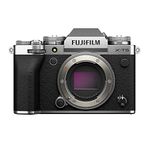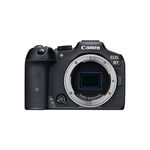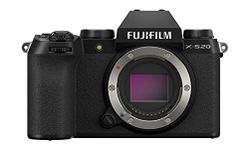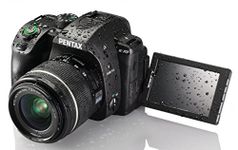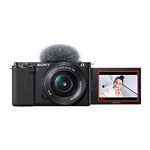10 bestMirrorless Camerasof December 2025
112M consumers helped this year.
16% off
1
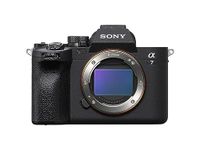
Sony-Alpha-7-IV-Full-frame-Mirrorless-Interchangeable-Lens-Camera,Body-Only-,-Black
Sony

9.9
5% off
2

Sony a7 III Full-Frame Mirrorless Interchangeable-Lens Camera with 28-70mm Lens Optical with 3" LCD, Black (ILCE7M3K/B)
Sony

9.8
13% off
3

Sony Alpha ZVE10 II - APS-C Interchangeable Lens Mirrorless Content Creators’ Camera
Sony

9.6
4
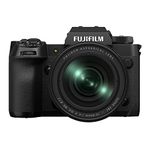
Fujifilm X-H2 Mirrorless Camera Body, w/FUJINON XF16-80mmF4 R OIS WR Lens Kit, Black (16781591)
Fujifilm

9.3
5

Nikon Z6III FX-Format Mirrorless Camera Body
Nikon

9.1
OtherUp to 7% off
6

Fujifilm X-T50 Mirrorless Digital Camera XC15-45mmF3.5-5.6 OIS PZ Lens Kit - Charcoal Silver
Fujifilm

8.8
5% off
7

Canon EOS R8 Full-Frame Mirrorless Camera
Canon

8.6
8
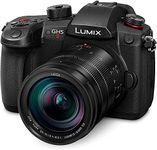
Panasonic LUMIX GH5M2, 20.3MP Mirrorless Micro Four Thirds Camera with Live Streaming, 4K 4:2:2 10-Bit Video, 5-Axis Image Stabilizer, 12-60mm F2.8-4.0 Leica Lens DC-GH5M2LK
Panasonic

8.3
10% off
9

Canon EOS R50 Mirrorless Camera RF-S18-45mm F4.5-6.3 is STM Lens Kit, 24.2 Megapixel CMOS (APS-C) Sensor, 4K Video, Hybrid Camera, Photo and Video, Vlogging, Content Creator, RF Mount, Black
Canon

8.1
10
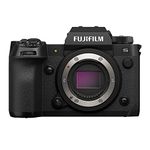
FUJIFILM X-H2S Mirrorless Camera Body, Black
Fujifilm

7.8
A Guide to Selecting the Best Mirrorless Cameras
Choosing a mirrorless camera can feel overwhelming because there are so many options and features to consider. The best way to start is by thinking about what you want to use the camera for—whether it's travel, family photos, sports, or creative photography. Understanding your needs will help you focus on the features that matter most to you. It's also important to consider how comfortable the camera feels in your hands and how easy it is to use, as this can make a big difference in your overall experience.
Sensor Size
The sensor is the part of the camera that captures light and turns it into an image. Sensor size is important because it affects image quality, low-light performance, and how much background blur you can get. The main types are full-frame, APS-C, and Micro Four Thirds. Full-frame sensors are the largest and generally offer the best image quality, especially in low light, but they make the camera and lenses bigger and heavier. APS-C sensors are a bit smaller and strike a balance between quality and portability. Micro Four Thirds sensors are the smallest, making cameras and lenses more compact, but with some trade-offs in image quality, especially in low light. If you want the best image quality and don't mind a bigger camera, go for full-frame. If you want something lighter and still very good, APS-C is a great choice. For travel or everyday use where size matters most, Micro Four Thirds might be best.
Autofocus System
Autofocus helps the camera quickly and accurately focus on your subject. This is especially important for action shots, wildlife, or when photographing kids and pets. Autofocus systems can vary in speed, accuracy, and the number of focus points. Some cameras have advanced tracking features that follow moving subjects. If you mostly shoot still subjects, a basic autofocus system will do. If you want to capture fast-moving action, look for a camera with a fast and reliable autofocus system and good subject tracking.
Continuous Shooting Speed
This spec tells you how many photos the camera can take per second when you hold down the shutter button. It's important for sports, wildlife, or any fast-paced action where you want to capture the perfect moment. Cameras with higher continuous shooting speeds can take more photos in a short burst, increasing your chances of getting the shot you want. If you mostly take portraits or landscapes, you don't need a high shooting speed. But if you love action photography, look for a camera with a higher frames-per-second (fps) rate.
Viewfinder Type
Mirrorless cameras use electronic viewfinders (EVFs) or just the rear screen to show you what the lens sees. An EVF lets you hold the camera up to your eye, which can help with stability and seeing in bright light. Some cameras only have a rear screen, which can be harder to use outdoors. If you prefer composing your shots with the camera to your eye, look for a model with a good quality EVF. If you’re comfortable using the screen, you might not need a viewfinder at all.
Image Stabilization
Image stabilization helps reduce blur from shaky hands, especially in low light or when using longer lenses. Some cameras have stabilization built into the camera body (in-body stabilization), while others rely on stabilized lenses. In-body stabilization works with any lens and is helpful for handheld shooting. If you often shoot in low light or without a tripod, look for a camera with good image stabilization. If you mostly use a tripod or shoot in bright light, this feature is less critical.
Video Capabilities
Many mirrorless cameras can shoot high-quality video, which is great if you want to record family moments, vlogs, or creative projects. Key things to look for are resolution (like 4K or Full HD), frame rates, and features like microphone inputs or flip-out screens. If video is important to you, check that the camera offers the video quality and features you need. If you only plan to take photos, you can focus less on this spec.
Lens Compatibility
Mirrorless cameras use different lens mounts, and the range of available lenses can vary. Some systems have a wide selection of lenses, while others are more limited. It's important to consider what lenses you might want in the future, such as wide-angle, telephoto, or macro. If you want lots of options, choose a camera with a well-established lens system. If you only need a basic lens or two, this may be less important.
Size and Weight
One of the main advantages of mirrorless cameras is that they can be smaller and lighter than traditional DSLRs. Size and weight matter if you plan to carry your camera around all day, travel, or want something discreet. Larger cameras can be more comfortable to hold, especially with big lenses, but smaller ones are easier to pack and carry. Think about how and where you’ll use your camera to decide what size works best for you.
Best Reviews Guide Newsletter
Get exclusive articles, recommendations, shopping tips, and sales alerts
Sign up for our newsletter to receive weekly recommendations about seasonal and trendy products
Thank you for subscribing!
By submitting your email address you agree to our Terms and Conditions and Privacy Policy

